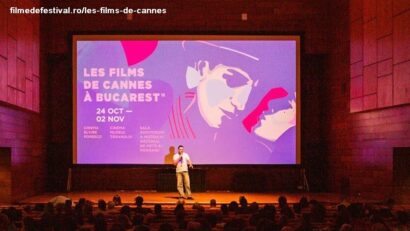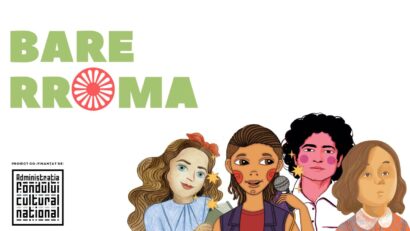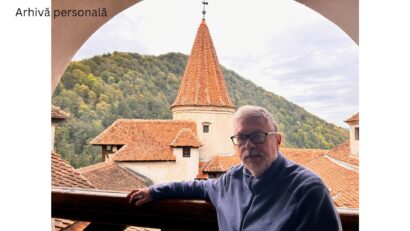The In the Kitchen Installation
"The simple joy of being in the kitchen, of enjoying homemade cakes and cookies, left an irreplaceable mark on our lives as children and teenagers"

Ion Puican, 07.06.2025, 13:00
Between May 17 and June 16, 2025, the exhibition-installation “In the kitchen. Cake recipes from mom” by artists Ana-Cristina Irian and Cristian Bassa will take place at the Celula de Artă Gallery in the center of the capital. Cristina Irian is a visual artist, researcher and curator. She studied sociology, visual anthropology, and has a doctorate in visual arts. Cristian Bassa is a photographer, designer, editor and collector. The two propose an intimate installation built around the kitchen table, a place that brings together culinary recipes handwritten by the artists’ mothers, family photos and the silent presence of memory. About the installation, artist Cristina Irian told us the following:
“The simple joy of being in the kitchen, of enjoying homemade cakes and cookies, left an irreplaceable mark on our lives as children and teenagers. Last night, I thought of a home installation built around a kitchen table. The installation includes objects that buzzed and spun around it when the cakes were being prepared. I gathered from the house those utensils that I knew were put to work: cups, measuring containers, a sieve, cookie cutters, a mixer. And in the background, I added the indispensable radio. This nucleus is wrapped in a stage design of a block of flats kitchen from the 1980s-1990s, the period that we want to bring back into discussion. The space quickly becomes cramped and the kitchen embraces, like a good mother or grandmother, the visitors, who most often come in pairs. The table in this installation becomes a place of gathering and multiplication of care and of the deed of producing and consuming food together with those close to us, with joy or with concern.”
How did the idea for the installation come about?
Track: “The idea of transforming our mothers’ cake recipes into the artistic installation “In the Kitchen”, hosted by the art cell, probably came from the trauma experienced, from the long-lasting and double-edged personal experience, that of loss and recovery. I am referring to the loss of the mother, that is, the person who wrote the recipes and transformed them for each of us into cakes, into birthday cakes. And of finding witness traces of those moments after a while in the house. Traces materialized in photographs, objects or letters. The recipe notebooks mysteriously kept drawings, family photos or other small notes in them. We were impressed by the fact that we found in these recipe notebooks a common cutout from our lives, but also from the lives of those who come and spend time in the facility or those who wrote to us on social networks about their own experiences. After announcing this initiative. Recipes turn into memories with people.”
Cristina Irian, in her capacity as a sociologist and anthropologist, talks to us about the complexity that lies behind simple kitchen recipes:
“Handwritten recipes and gestures can accumulate multiple roles and meanings, depending on the place they have gained in the lives of several generations and depending on the context in which they emerged and how they were transmitted. Psychological studies on taste-induced nostalgia suggest that certain aromas and smells can trigger emotional responses and support identity continuity. Anthropological research on post-memory and intergenerational trauma positions food as an important vector of cultural memory. Recipes often survive language. Inherited gestures, mixing ingredients, tasting and preparing food become silent rituals of care, of continuity. They can contribute to preserving intergenerational memory, sometimes even in leaps, from grandparents to grandchildren, depending on various living and dwelling practices. They become a powerful binder, especially when, between members of the same community, the same family, a rupture occurs, a physical distance appears. A transformed recipe in the cake can make a lack of ingredients more bearable. Cake recipes can be considered a form of emotional language. They leave a trace of love, care, friendship, because they also record networks of relationships between relatives, friends or neighbors. A recipe book takes you through the lives of some people, in moments of celebration, but also in another space. Basically, you are somehow sitting at the table with those who spent good times together.”
At the end of the interview, Cristina Irian reveals the creators’ desire in relation to the public and this project:
“We want first and foremost to interact with visitors, not to just showcase our experience. If they wish, they are invited to contribute to a collective archive of memories about cakes, images and recipes. … We want to translate this interdisciplinary research into a visual and sensory experience for visitors, by exploring food as a carrier of memory, identity and resilience.”






























